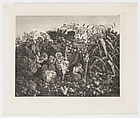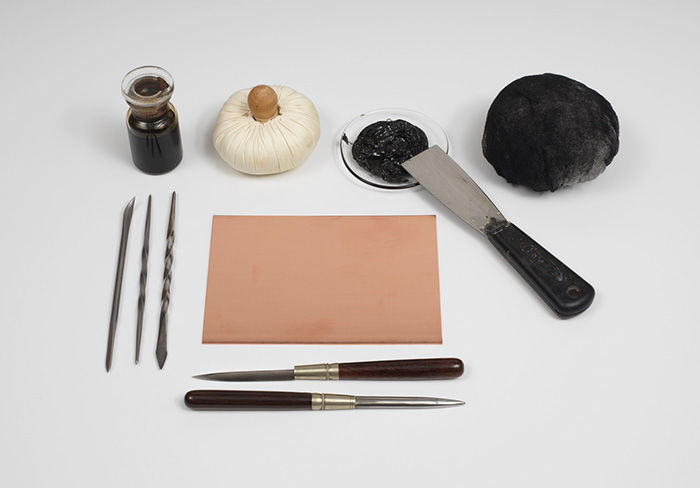Melancholic woman seated amongst foliage (Trauerndes Mädchen im Kraut)
Carl Wilhelm Kolbe German
Not on view
This late etching by Carl Wilhelm Kolbe was inspired by a woodblock designed by his younger compatriot Caspar David Friedrich about 1803 (see 27.11.2) widely interpreted as an expression of Romantic notions about the brevity of life. Like Friedrich, Kolbe depicts a melancholic woman sitting alone in a landscape, while a moth is about to fly into a spiderweb. Notably, however, he transforms Friedrich's spare landscape into a lush setting with varied, oversized vegetation. Over the course of his career, Kolbe produced a total of 28 such "Kraeuterstuecke" (vegetation pieces), two of his most famous featuring cows immersed in similarly dense foliage and brush (see 1994.136.1 and 1994.136.2). In the present work he amplifies the disjunction in scale of the vegetation and the figure (here a human, not a farm animal) and includes the broken remnants of a wooden structure, probably an arbor. Here, nature subsumes the products and concerns of humankind.
On another impression of this print, Kolbe inscribed the following verses loosely adapted from a poem by poet and philosopher Johann Georg Jacobi (1740-1814):
"Sag, wo ist die Laube hin, / Wo die Rosen standen? / Wo sich Hirt und Schaeferin / Blumenkraenze wanden? - / Wind und Wetter stuermten sehr, / Jene Laube ist nicht mehr."[1] (Tell me, where is the arbor , / Where the roses grew? / Where did the shepherd and shepherdess weave their floral wreathes?- / Wind and weather stormed through, / That arbor is no more."
[1] Ulf Martens, Der Zeichner und Radierer Carl Wilhelm Kolbe d. Ä. (1759-1835). (Berlin, 1976), pp. 34, 86, no. 94.
This image cannot be enlarged, viewed at full screen, or downloaded.


